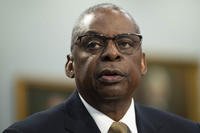The federal workplace has to adapt to a looming personnel issue that federal managers ignore at the country's peril, the Defense Department's deputy chief information officer said.
During a phone interview, David M. Wennergren said the department must change to draw in employees who have not known a world without the Internet.
Two shifts are happening in the federal government, Wennergren said, and each reinforces the other.
First, he said, 971,000 federal employees will become eligible for retirement over the next few years. Second, he explained, is that the world is vastly different from the early days of technology in the federal workplace.
"The world has moved to the Web 2.0 vision of services available anywhere -- the ability to move things through the cloud, to use mass collaboration for networking services and to bring speed and agility to the delivery of information capabilities," he said. "It's a radical set of changes moving us away from the old world, where the answer was always just to build big information technology systems."
"The Net Generation," as Wennergren called the rising pool of potential federal workers, sees information technologies as a given ¿ like air or water. And unlike their parents, he said, they don't look at joining a company or agency and then staying with that job for life.
"They are our prime target for people coming into the work force ¿ whether it's 18-year-olds coming into the military or 21-year-olds coming out of college to join the military or the federal work force," Wennergren said.
The "Baby Boom" generation is leaving government service. Even the youngest among them are retirement-eligible now, Wennergren said.
"The Net Generation will be taking leadership positions at a much younger age," he said. "So we think it is really important to understand what the work force issues really are. What are the norms and behaviors and priorities of this new work force? What kind of environment can we provide that will help them thrive?"
Then, he said, the federal government needs to use the tools available to attract, hire and retain these people. This must start now, he added, if the federal government is to succeed.
Federal managers, he said, need to look at the nature of work and how to create leaders at a younger age. Other aspects include transforming the ratings system from a once-a-year rating to a more hands-on mentoring approach, he added.
The good news is that the Net Generation believes strongly in community service, Wennergren said.
"This is a generation that wants to serve and wants to make a difference," he said. "But they want to be at a place where they will have the tools and capabilities to get the job done."
The federal workplace must provide the type of environment that allows the new generation of tech-savvy government workers to use the capabilities they bring, Wennergren said. This includes providing systems "where people can get onto the network from anywhere, work from home, work on the road, [and] can use social media and instant messaging and chat [features]," he added.
Supervisors need to ask themselves if they are creating an environment that plays to the Net Generation's strengths.
"Are you helping them to grow and recognize that this is a place they can make a difference?" he asked. "That's the key."










